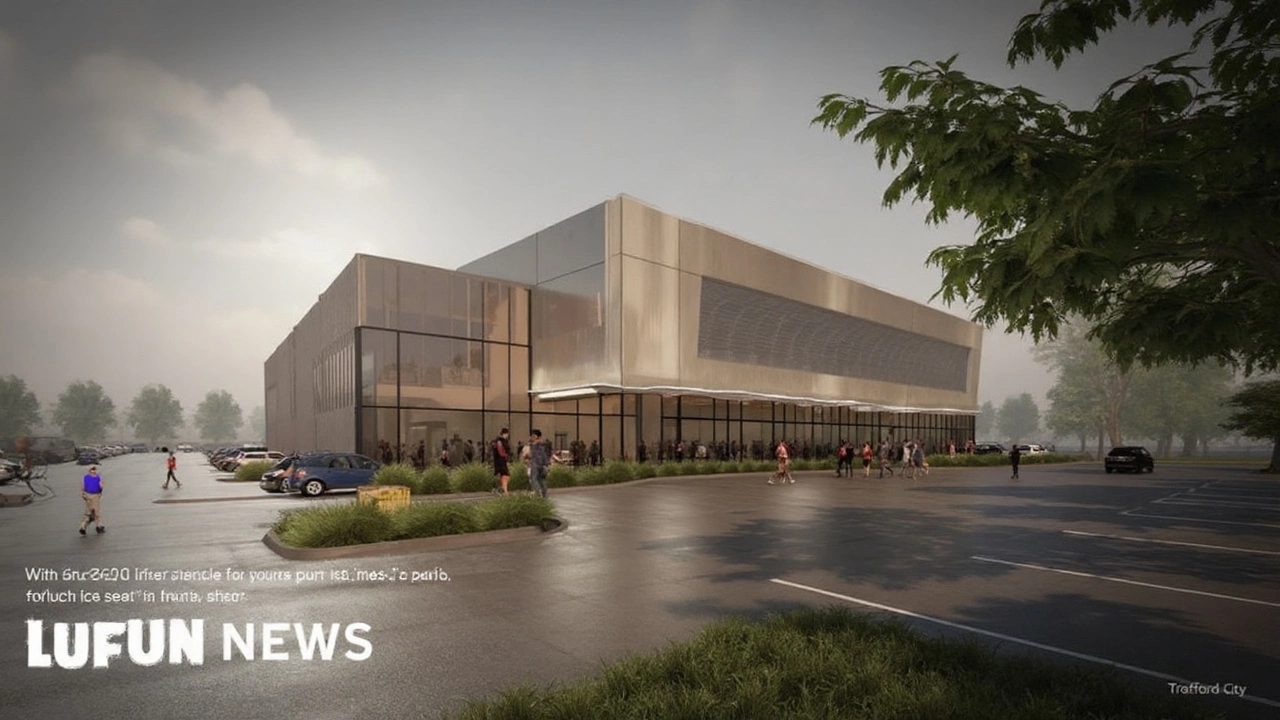A 3,000-seat ice arena that could reshape Manchester’s sports scene
Manchester could have a new ice hockey hub within two years. Plans for the TraffordCity Arena—a 3,000-seat, multi-use venue—have been formally lodged with Trafford Council, laying the groundwork for a modern home for the Manchester Storm and a fresh centre for ice sports across Greater Manchester.
The proposal covers a three-acre brownfield plot next to the Chill Factore, the UK’s longest indoor snow slope. The design is by AEW Architects, with landowner Peel Waters partnering with leisure developer ICITIES, national operator Planet Ice, and the Manchester Storm. The aim is clear: deliver a flexible, year-round venue that can switch from elite ice hockey to public skating and then to entertainment events without missing a beat.
The arena is planned to host top-flight hockey on game nights, then open doors to learn-to-skate classes, figure skating sessions, sledge hockey, and school programmes through the week. Off the ice, the floorplan will convert for concerts, film screenings, VR experiences, and live shows—broadening the calendar and spreading footfall beyond matchdays.
Hospitality is a major part of the brief. Plans include a sports bar with match views, a family-friendly restaurant, party rooms, corporate suites, and VIP areas. The developers want a game-night experience that feels big-league—a step up in comfort, food options, and tech—while still being welcoming for families and first-time visitors.
If approved, the build would run for around 12 to 15 months, with opening targeted for late 2026 or early 2027. The team behind the project says they are ready to move quickly once the green light comes through.
Manchester Storm’s front office has made no secret of its enthusiasm. The move would take the Elite Ice Hockey League club from its current base in Altrincham to a purpose-built rink designed around game-night operations, broadcast needs, and fan amenities. For the club, it’s a chance to grow crowds, bolster matchday revenues, and expand its community programmes.
Peel Waters frames the arena as a key piece of TraffordCity’s strategy to be a one-stop destination for sport and leisure. The district already brings together iFLY indoor skydiving, The Padel Club, Fives golf, and the Chill Factore, with big-ticket additions on the way, including the £250m Therme wellbeing resort and an inland surf park led by Tartan Leisure. The ice arena would plug into that ecosystem, sharing transport links and footfall with one of the North West’s busiest leisure zones.
AEW Architects, which has worked on multiple leisure schemes, says the brief is about flexibility as much as design flair: a building that can host intense, fast-paced hockey on Saturday night, then pivot to a packed public schedule on Sunday morning. Planet Ice, set to operate the venue as its 15th site nationwide, brings the programming and staffing model to make that switch work in practice.

What’s in the plan, who benefits, and what happens next
Here’s what the application outlines and how it would play out if it’s approved.
- Location and scale: A purpose-built rink on a three-acre brownfield plot beside Chill Factore, within TraffordCity. The site choice is about clustering activity—ice sports next to skiing, skydiving, racket sports, and retail.
- Core use: Elite ice hockey for Manchester Storm, with seating for about 3,000. The layout is designed to amplify noise, sightlines, and atmosphere while keeping travel, ticketing, and concessions smooth.
- Community and participation: A daily public skating schedule, learn-to-skate pathways, figure skating sessions, club ice time, and sledge hockey access. The operator’s model typically includes school bookings and grassroots development.
- Entertainment conversion: The rink can shift to concert and event mode, with staging, screens, and sound set-ups built into the plan. VR installations and film nights are part of the proposed mix.
- Food, drink, and premium spaces: A high-end sports bar, a family restaurant, party rooms for birthdays and team nights, plus corporate suites and VIP areas aimed at sponsors and hospitality clients.
- Operations: Planet Ice, a national operator, would run the building, bringing staffing, event scheduling, and maintenance expertise specific to ice venues.
Transport access is a big selling point. TraffordCity sits by the M60 and is already geared for major crowds on weekends and holidays. The Metrolink line to the Trafford Centre adds public transport options, with bus links feeding the wider area. Parking and traffic plans will be scrutinised as part of the planning process, with peak matchday flows and event changeovers a likely focus.
For fans, the promise is straightforward: more seats, better sightlines, faster service, and easier access. For players and coaches, a purpose-built environment should bring better locker rooms, training ice availability, and broadcast-friendly infrastructure. For families and casual visitors, it’s the convenience—try skiing in the morning, skate in the afternoon, grab dinner and catch a game at night—without leaving the district.
The move also fits the Storm’s growth ambitions. A larger, more modern venue typically means broader sponsorship appeal and more matchday activation—think fan zones, junior showcases, and themed nights. It can also help the club attract visiting fans and stage pre-season tournaments or neutral-site games that need premium facilities.
On the community side, the impact could be significant. The North West has fewer ice facilities per head than many regions, and ice time is often oversubscribed. A new sheet of ice opens space for learn-to-skate programmes, figure skating clubs, rec leagues, sledge hockey sessions, and school groups. That matters for talent pipelines as well as inclusion—getting more kids and beginners onto the ice is how future players, officials, and fans are made.
Economically, arenas like this tend to create construction roles followed by a mix of permanent jobs across operations, coaching, hospitality, cleaning, security, and event production. The timing also lines up with TraffordCity’s wider expansion, so businesses nearby—restaurants, retail, hotels—could see knock-on benefits from event nights and weekend skating traffic.
What about sustainability? The application centres on a brownfield site, which avoids building on undeveloped land. Modern ice rinks increasingly look to cut their energy footprint with efficient refrigeration systems and heat recovery that can warm air and water elsewhere in the building. While detailed engineering specs haven’t been published, the design team will be expected to address energy use, noise, and light as part of the planning conditions.
Planning next steps are standard for a project of this size. Trafford Council will review the submission, open a public consultation window, and take feedback from statutory bodies—covering highways, environmental health, and design. If the scheme is approved, the partners would move into procurement and appoint a main contractor before breaking ground. The build programme of roughly 12 to 15 months suggests the shell-and-core construction is relatively straightforward compared with larger indoor arenas.
The partners have been vocal about their roles. Manchester Storm’s leadership has called the project a major step in the club’s long-term plans. Peel Waters, which leads the wider TraffordCity vision, pitches the arena as part of a “sport for everyone” approach—golfing, skiing, skydiving, football, gym, padel, and now ice, all in one district. AEW Architects describes the scheme as a chance to raise the bar for leisure design in the area. Planet Ice sees it as a natural expansion of its network, plugging Manchester into a national calendar of tournaments, showcases, and development camps.
There are still unknowns—final funding structure, detailed event calendar, and how the arena will balance pro-team needs with grassroots demand for ice time. But the direction of travel is consistent: more capacity, more flexibility, and more reasons for families to spend a full day at TraffordCity.
If the council signs off as planned, steel could rise in 2025, with skates hitting fresh ice by the end of 2026 or the start of 2027. For the Storm and for Manchester’s wider sports scene, that timeline would turn a planning document into a busy new landmark—one that blends elite hockey, community ice, and live entertainment under a single roof.
